2024 year in review: Turbulent year a test of our sectors heart and soul
AS we close out another eventful year in Tasmanian agriculture, it is safe to say 2024 had plenty of highs and lows marked by a series of challenges, resilience, and growth within the sector.
From an extremely dry start to the year, with minimal rainfall and fodder shortages, to ongoing issues surrounding animal welfare, abattoir closures, wild weather, and rising interest rates, farmers have faced a turbulent year.
Add to this the rollout of electronic IDs, difficulties with the Tasmanian Freight Equalisation Scheme, a series of supermarket inquiries and the closing of the 3G network, there has been no shortage of obstacles.
However, alongside the challenges there were plenty of wins for the sector including securing vital water from the highly sought after South-East Irrigation Scheme and acquiring funding for the Rural Drought Fund and EID tagging.
Many Tasmanian farmers were recognised with awards for their outstanding harvests and produce and sector advocates worked hard to tackle the ongoing challenges within agriculture.
Fruit Growers Tasmania CEO Peter Cornish said the state’s fruit industry had another solid year in terms of production but noted challenges in sustainable profitability.
“We’ve got our work cut out for us to improve some of the things that effect the industry like the freight equalisation scheme and payroll tax,” Mr Cornish said.
“We need to try and ensure there’s an appropriate environment in which our commercial growers can just go out there and do their thing.”
Mr Cornish is hopeful that the new year will bring a resolution to the freight equalisation issues that will benefit Tasmanian exporters.
“Based on the Tasmanian Government’s own data, there is a clear increase in the disadvantage faced by Tasmanian exporters across Bass Strait that needs to be addressed immediately.”
The fruit industry had another strong year for cherry exports, with more than half of Australia’s cherry exports coming from Tasmania.
“We produced about 6,500 tonnes of saleable cherries,” he said.
Mr Cornish said that Tasmania had a decent growing year across all fruits and that the state remained the largest producer of raspberries and blackberries nationwide. However, he said an oversupply of berries nationally presented challenges for profitability.
For the year ahead Mr Cornish said Tasmania was on track to have another good production.
“Our aim is to focus on very high quality so that we’re able to get the best price for everything we produce,” he said.
“Two-thirds of the fruit we grow here still stays within Australia, so the domestic market is still the most important.” Mr Cornish said, adding that continuing to share the good things about Tasmanian fruit on a national stage was important so people continued to look out for it.
Wool Solutions director Rob Calvert reported a mixed year for the wool industry.
“Rewinding to this time last year we saw a nice spike in the market and went into Christmas optimistic that strength would continue but unfortunately when we returned sentiment had deteriorated and the market basically drifted sideways and down from January onwards.”
Mr Calvert attributed the market struggles to the large stocks from previous years being worked through by mills and end users of wool.
He said during the Covid pandemic the wool market benefited from strong retail sales, but this year wool retail sales “fell off a cliff” due to several factors including rising interest rates.
However, Mr Calvert said there was one shining light for the wool industry— the ultrafine wool market (15 micron and finer) had sold incredibly well.
Mr Calvert said he is hoping in the new year the wool markets start to see more positivity as Europe and China work through their held stock and an oversupply of wool eases.
“Pricewise I think we’re coming off a low base and there is also an incredibly low amount of greasy wool full stop so it’s not going to take much of an increase in demand to drive the market dearer,” Mr Calvert said.
“Hopefully in 2025 we start to see prices slowly and methodically start to trend upwards but you don’t go from low prices to high prices overnight.”
“In the wool industry it typically takes 12 to 18 months to go from trough to peak, so hopefully it starts rising in autumn next year and then we see an upward trending market to a likely peak sometime the year after,” Mr Calvert said.
Overall, TasFarmers president Ian Sauer observed that farmers across the board faced difficulties regardless of their enterprise.
“I think all farmers have been concerned about the cost of doing business this year,” Mr Sauer said.
“Everything’s gone up in price, and that’s been difficult.”
He also expressed concern over the uncertainty within Tasmanian Parliament, which he said was creating uncertainty for investment in the state.
“We’ve seen the federal government trying to find its feet in relation to agriculture, and that’s certainly taking up time,” he said.
“We’ve got the federal election coming up and it is an imperative that we have policies that look at agriculture for the long term.”
For Mr Sauer, one of the key priorities for the coming year was stability—both in financial markets and within Tasmania’s political system.
“That’s really important for the farming community in general,” he said.
Despite these challenges, Mr Sauer noted the year saw significant strides in policy development including the introduction of the Farm Access Code and lobbying efforts for continued funding of the South-East Irrigation Scheme.
“TasFarmers put through an election policy to all parties at the beginning of the year, and the bulk of those policies have been dealt with or implemented this year,” he said.
Looking forward, the expectations for 2025 are optimistic but caution remains.
“We’ve had rain, we’ve had commodity prices moving up, and there’s an expectation that interest rates will start coming down in 2025, so I think they’re all positives,” Mr Sauer said.
“Farmers are still slightly apprehensive about what may happen, but fingers are crossed for a great year.”
CHECK OUT THE GALLERY BELOW FOR SOME OF THIS YEARS HIGHLIGHTS.

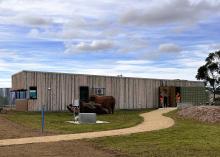
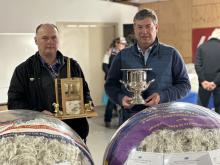
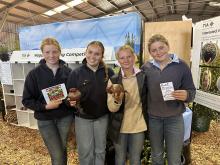
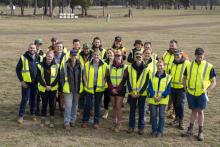
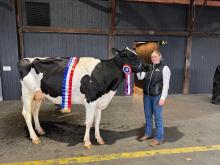
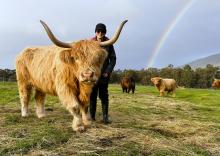
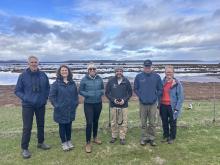
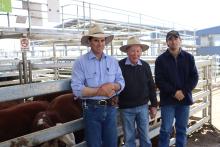



Add new comment